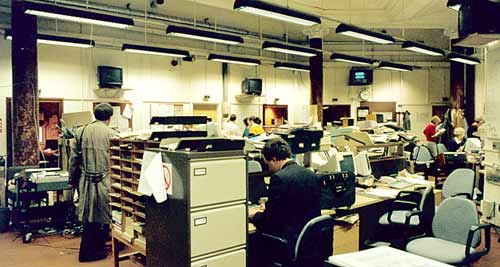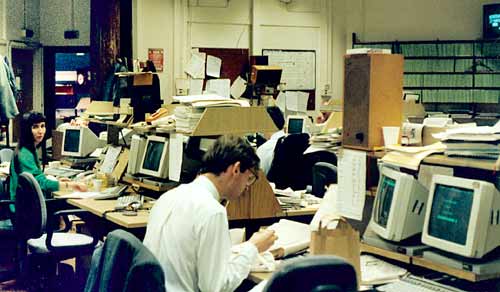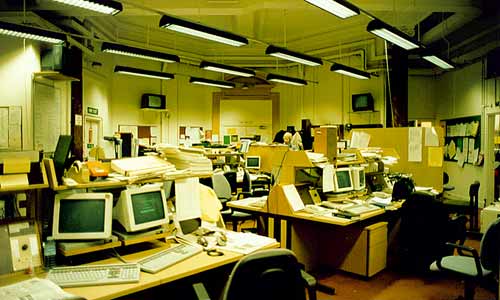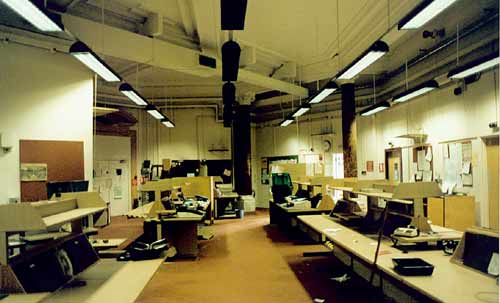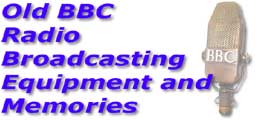
The Lords finally agreed to a trial of radio coverage of their proceedings in 1968. BH Studios B8 and B9, together with recording channel H9, were used for this experiment. Nothing was actually broadcast, the programmes being made available to their Lordships for them to pass judgement.
Perhaps they were less than impressed because it wasn't until June and July 1975 that another experiment took place and the public finally had a chance to hear their representatives, both Commons and Lords, at work. For this trial period, the BBC built a small radio complex in the grounds of the Palace of Westminster using a couple of OB vehicles and some Portacabins. Does anyone have any photos of this installation?
When Parliament gave permission for permanent radio broadcasting to begin, space was offered in a building which occupied the corner of Bridge Street
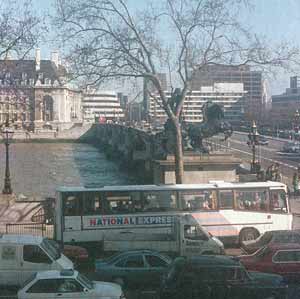
The building may have been nearing the end of its life, but it did offer some splendid views. The picture of the Clock Tower above was taken from the roof. And this shot was taken through the recording channel's rather small window, and looks out at Westminster Bridge with the statue of Boudica (just behind the tree). Unfortunately the windows were only very rarely cleaned...
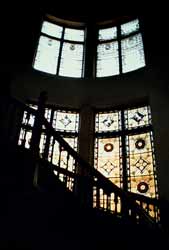
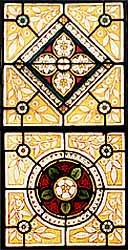
The Palace of Westminster Police later used much of the ground floor. When Parliament decided to allow television coverage this space was made available to the BBC and used for a large office. There was also a TV technical area on the ground floor at this time, but the main television installation was in Westminster Central Hall.
The BBC vacated the building in 1991 and the structure was demolished in 1994 to make way for Portcullis House which now provides office space for Members of Parliament and their staffs.
Intake
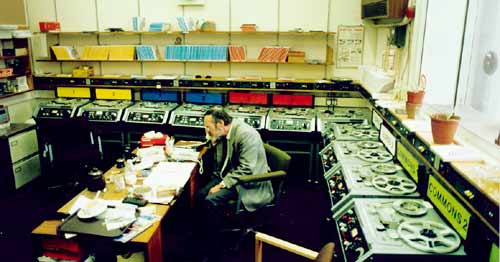
One pair of machines (on the left in the photo, with the yellow panels) made recordings used by Today and Yesterday In Parliament (TIP and YIP). The second pair (blue) were for local and regional output and the third (red) for the News Sequences and other programmes. A single pair of machines (white) recorded the Lords. Using seven inch spools of tape, changeovers were done every thirty minutes. For Local Radio this was reduced to fifteen minutes for the first hour and a half of the afternoon sittings. Material was therefore not available until a maximum of half an hour after it had been recorded. In an emergency changeovers were done on demand to allow faster access. The colours of the panels above the machines were repeated on the labels applied to the tape spools and boxes.
In order to extract a clip from these recordings, the tape was taken to a studio and the required section was copied. The rule was that the working recordings should not be cut as the tapes were reused day after day, after being bulk erased.
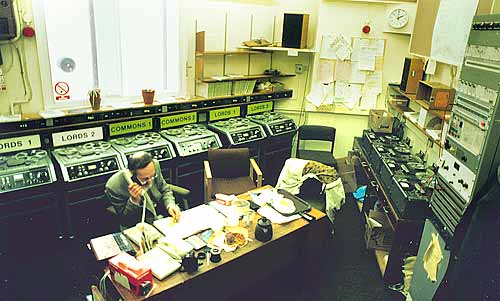
On the jackfield were feeds from the Committee Rooms in the Houses of Parliament. These were recorded in Intake during the morning, but afternoon committees were generally recorded
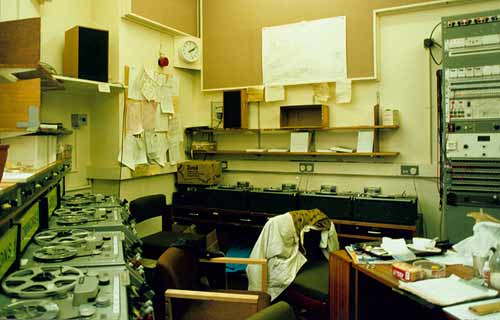
A daily task was 'cutting prayers' from the Lords. At the start of each sitting, both Houses have a few minutes of prayers. 'Strangers' are not admitted to the public galleries until after this ritual, and it was not to be recorded. No problem in the Commons, as the PA system wasn't switched on so our feed did not include prayers. But the Lords needed their PA to help them hear so the feed incoming had to be cut during the crucial few minutes. Originally done in the Central Technical Area, the job was later moved to Intake and a Studio Manager had the job of listening just enough to notice when prayers were over and then 'uncut' the feed!
Cubicle 1A
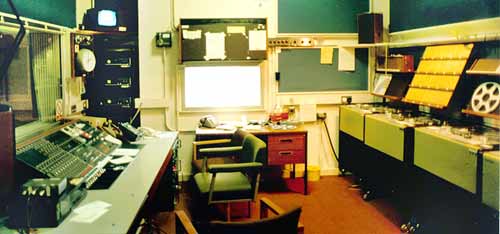
Cubicle 1A, seen here, was by far the largest, and had enough space for five Telefunken M15As. This made it possible to record committees and still have enough machines for other jobs. The large board mounted on the second machine from the far end was for insert tapes. It provided sufficient space to lay out all the tapes for the half-hour Today in Parliament transmission. The window in this view looked across Bridge Street to the Palace of Westminster.

Above the rack is an 'Annunciator'. This displayed the name of the current speaker in both chambers (two switchable feeds) and, if the audio was switched on, would emit a nasty jangling sound in the event of a vote. These 'division bells' can be found all over Westminster, even in the local pubs. In the studios, a white light indicated a division. If the division bell rang while an MP was in the studio he or she had just ten minutes to get to the voting lobby.

A mixing area in the Palace itself could be used to add commentary to the Commons and Lords feeds and this was used for the transmission of Prime Minister's Question Time (PMQs) - in those days a twice weekly event. There was usually a great demand for clips from this small section of the Parliamentary day, so extra recordings were made from which clips could be cut, avoiding the need to copy from the Intake tapes.
Other technical areas

The boxes on the wall just beneath the small observation window carried the tape machine routing and source selection controls.
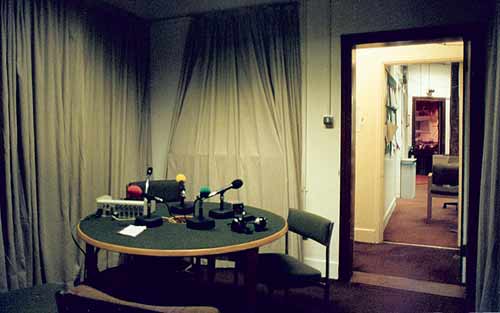

At the other end of studio 3 was a door leading into the central technical area. In addition to housing the bays containing the line amps, jackfields, the receivers which fed the ring-mains, etc, this room was used as a workshop by the maintenance teams.
Editorial area
